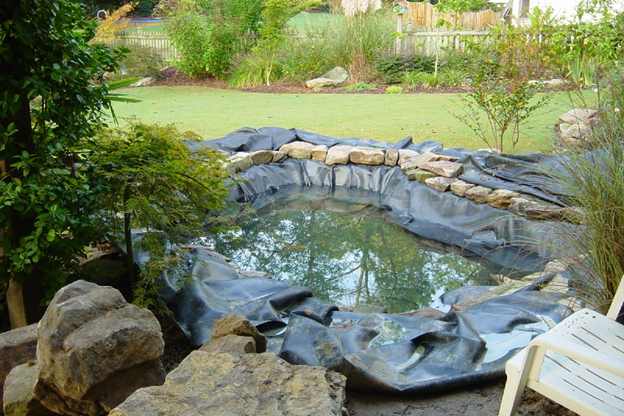It is tempting to take a shortcut—simply put a new liner over the old one and call it a day—when a pond liner starts to leak or disintegrate. It sounds simpler, quicker, and maybe even less expensive, but actually it’s a risky step that might generate more issues than it resolves. This is one area you should not cut if you are serious about keeping a healthy and long-lasting pond.
Many pond keepers have made the error of layering liners only to have unanticipated effects down the line. Though even the best equipment cannot make up for a weak basis, companies like Evolution Aqua Nexus provide sophisticated filtration systems created to maintain clean, healthy ponds. Starting from the ground up—which includes the liner—as That Pond Guy often emphasizes in his guidance, pond success
1. Decay Pockets and Trapped Debris
Laying a new liner on top of an old one is fundamentally making an undesirable sandwich; trapped between the two layers could be organic debris, algae, and filth. This waste decomposes over time to leave decaying cavities. These pockets can cause dangerous gases like hydrogen sulfide and methane, which might bubble up and so compromise the water quality of your pond—or worse, kill your fish.
Especially perilous if the old liner has tears or folds that let soil and plant material below it pass. Once hidden, those spots grow into anaerobic sludge and bacterial breeding grounds. Aside from being uncomfortable, this might also beneath upset your fresh liner.
2. Concealed Sharp Objects
Liners first go out from punctures from rocks, roots, or sharp trash, among several causes. Those dangers still lurk underneath if you do not completely remove the ancient liner. Though your new liner seems strong, sooner or later the water above will put pressure on it and create a sharp edge underneath.
It’s like laying a fresh carpet over shattered glass; sure, it seems good at first, but step in the wrong place and you’re going to feel it. Weight, erosion, and shifting ground can force the sharp rubbish upward over time, piercing both liners and causing hard-to-find leaks.
3. Poor Fit and Limited Flexibility
Each pond has somewhat different contours. Adding a fresh liner over an older one produces ungainly shapes and uneven surfaces. Particularly close to shelves and corners, the fresh liner may not settle well in the curves or ledges of your pond. This results in folds, air pockets, and stress points that impair the liner’s capacity to bend under water pressure or temperature swings.
Reduced flexibility raises the odds of later rips or tears, especially during freezethaw cycles. A badly fitted liner is almost a ticking time bomb if your area experiences cold winters.
4. Missed Chance for a New Beginning
Though it’s a major effort, changing a liner is also a great moment to examine and enhance the other components of your pond system. Putting a fresh liner allows you to change your pond, add superior plumbing, or move to a modern filtration system. If you are only covering up issues rather than really fixing them, these improvements are much more difficult.
In Conclusion
While wanting to go the simple path is not embarrassing, shortcuts with pond liners cause failures. Although it may seem wise at the time, laying a fresh liner over an old one can have concealed hazards—trapped trash, sharp items, poor fit, and missed chances—that may bite you.





